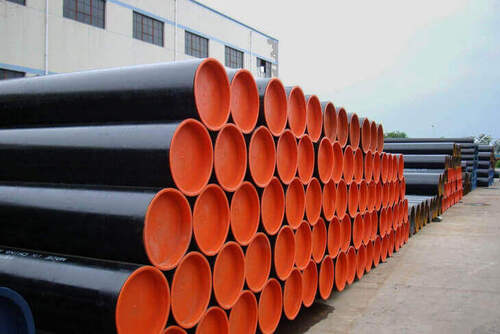Carbon Steel Round Pipe
Carbon Steel Round Pipe Specification
- Application
- Structure Pipe, Oil Pipe, Chemical Fertilizer Pipe, Fluid Pipe, Gas Pipe, Architectural, Construction
- Other Material
- Carbon Steel
- Thickness
- 0.1mm - 1000 mm Millimeter (mm)
- Product Type
- Carbon Steel Pipes
- Material
- Carbon Steel
- Type
- Seamless
- Standard
- ASTM
- Shape
- Round
- Outer Diameter
- As per Pipe Millimeter (mm)
- Weight
- As per Pipe Kilograms (kg)
Carbon Steel Round Pipe Trade Information
- Minimum Order Quantity
- 100 Kilograms
- FOB Port
- Yes Available
- Supply Ability
- 10000 Kilograms Per Day
- Delivery Time
- 7 Days
- Packaging Details
- As per customer requirement
- Main Export Market(s)
- Asia, Australia, Central America, North America, South America, Eastern Europe, Western Europe, Middle East, Africa
- Main Domestic Market
- All India
- Certifications
- Test Certificate
About Carbon Steel Round Pipe
Carbon steel pipes are a type of steel pipes that are primarily made from carbon as the main alloying element. They are widely used in various industries due to their strength, durability, and versatility. Carbon steel pipes are commonly used in applications such as transportation of fluids, structural support, and the conveyance of gas, oil, and water.
The carbon content in these pipes ranges from 0.06% to 1.5%, with higher carbon content providing increased strength but reduced ductility. The carbon steel pipes may also contain small amounts of other elements like manganese, silicon, and phosphorus to enhance specific properties.
Carbon steel pipes come in various forms, including seamless and welded. Seamless carbon steel pipes are manufactured without any welding seam, resulting in a smooth, continuous pipe with uniform wall thickness. Welded carbon steel pipes are produced by joining the ends of steel strips or plates together through welding processes, such as electric resistance welding (ERW), submerged arc welding (SAW), or high-frequency induction welding (HFIW).
These pipes are available in different sizes, diameters, and thicknesses to meet the requirements of different applications. They are commonly categorized based on their wall thickness, such as schedule 40, schedule 80, and so on.
Carbon steel pipes offer several advantages, including high tensile strength, good corrosion resistance (depending on the protective coating), and cost-effectiveness. They are suitable for use in a wide range of environments and can withstand high temperatures and pressures.
However, carbon steel pipes are susceptible to corrosion if not properly protected. To prevent corrosion, they can be coated with materials like zinc (galvanized coating) or subjected to other protective treatments, such as painting or epoxy coating.
Overall, carbon steel pipes are widely used in industries such as oil and gas, construction, water supply, plumbing, and automotive due to their excellent mechanical properties and affordability.

Price 270 INR/ Kilograms
- Minimum Order Quantity
- 100 Kilograms
- Supply Ability
- 10000 Kilograms Per Day
- Delivery Time
- 7 Days
- Main Domestic Market
- All India
- Main Export Market(s)
- Asia, Australia, Central America, North America, South America, Eastern Europe, Western Europe, Middle East, Africa

Price:
- 50
- 100
- 200
- 250
- 500
- 1000+



